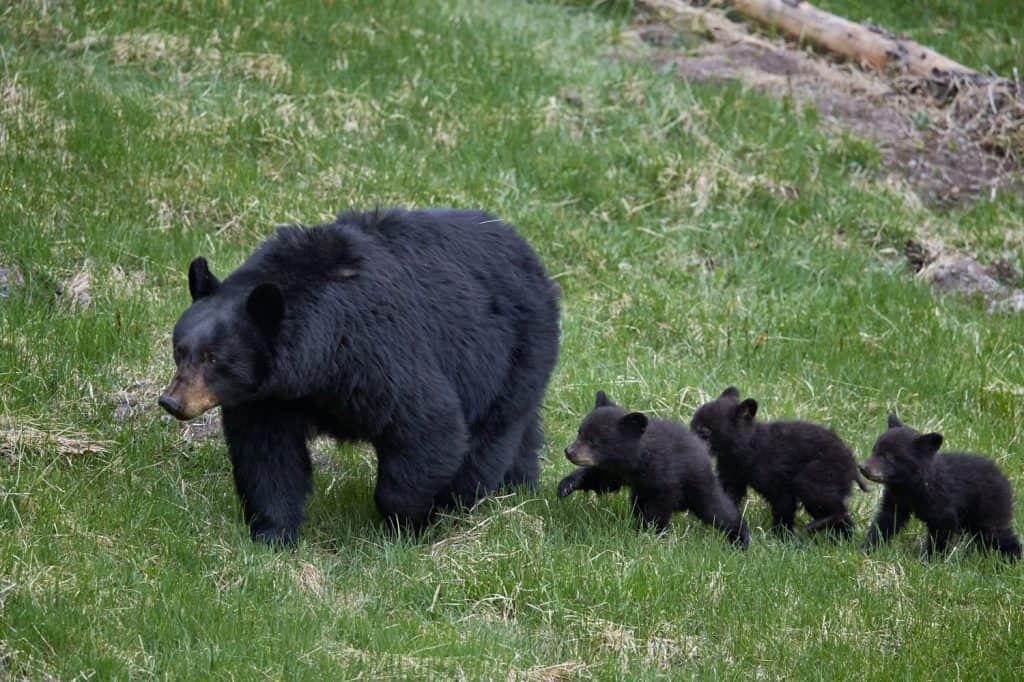
The post The Largest Bear Ever Trapped in Utah appeared first on A-Z Animals.
Utah’s rugged and dramatic landscape is the perfect setting for the state’s diverse wildlife, which includes a considerable population of bears. But just how big do Utah’s bears get? To find out, A-Z Animals spoke with Chad Wilson, a wildlife biologist from the Utah Division of Wildlife Resources (DWR).
Utah’s Bears and Where They Live

Black bears typically live in the eastern half of Utah.
©Robert Harding Video/Shutterstock.com
Utah is home to only one bear species: the black bear (Ursus americanus). While grizzly bears (Ursus arctos horribilis) once roamed the state, the last one was killed in the 1920s. Utah’s black bears generally stick to higher elevations and forested areas, with about 80 percent living between 7,000 and 10,000 feet. You can find them in places like Fishlake National Forest, the Wasatch Range, and the Uinta Mountains. They typically avoid open valleys and deserts, although some black bears can still be found at lower elevations.
Utah’s black bears are omnivores, with a diet consisting of about 90 percent plants. They primarily eat nuts, shrubs, grasses, and berries, and supplement their diet with insects and, occasionally, by scavenging on carcasses.
It has become more common to spot bears near campsites and other recreational areas where they were previously rare. Black bear numbers can fluctuate, however, based on weather patterns, with drought being a major factor, according to Wilson.
“We have had a decrease in the population compared to about five years ago, but it seems to be leveling out,” he says. “It seems the biggest factor in bear populations is the weather. We see numbers go down and more conflict when we are in drought.”
How Big Are Bears in Utah?
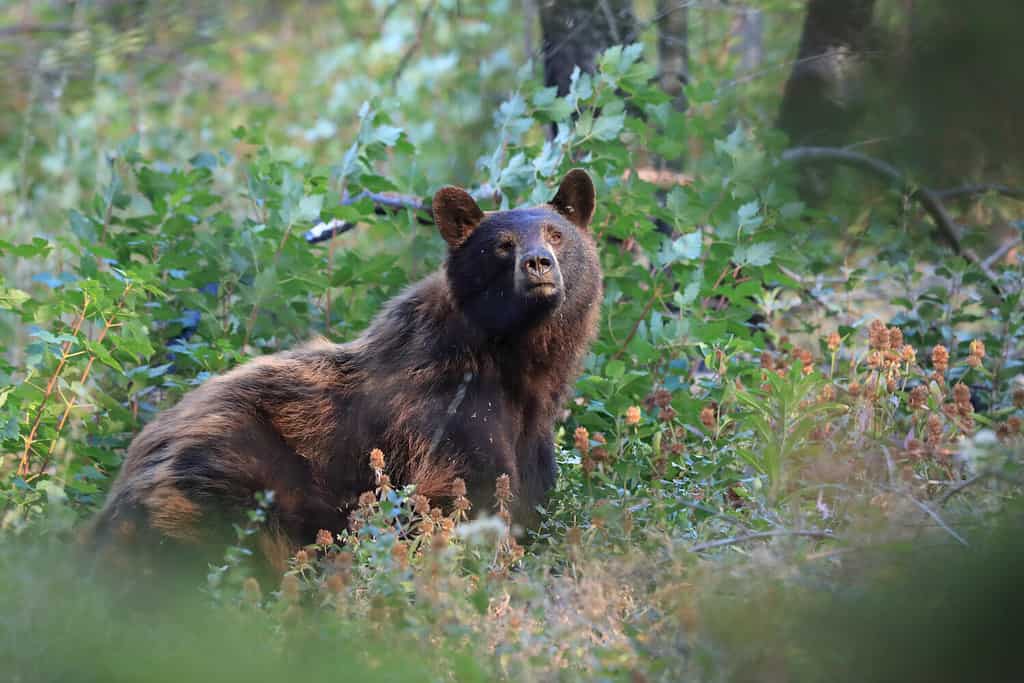
Many black bears are not actually black.
©Greens and Blues/Shutterstock.com
Utah’s black bears are typically 4 to 5 feet long. Adult males can weigh over 300 pounds, while females average between 130 and 150 pounds in the summer. Although they are called black bears, their fur color varies. Many are dark brown or black, often with lighter muzzles, and some can even have blonde fur.
Bear Hunting in Utah
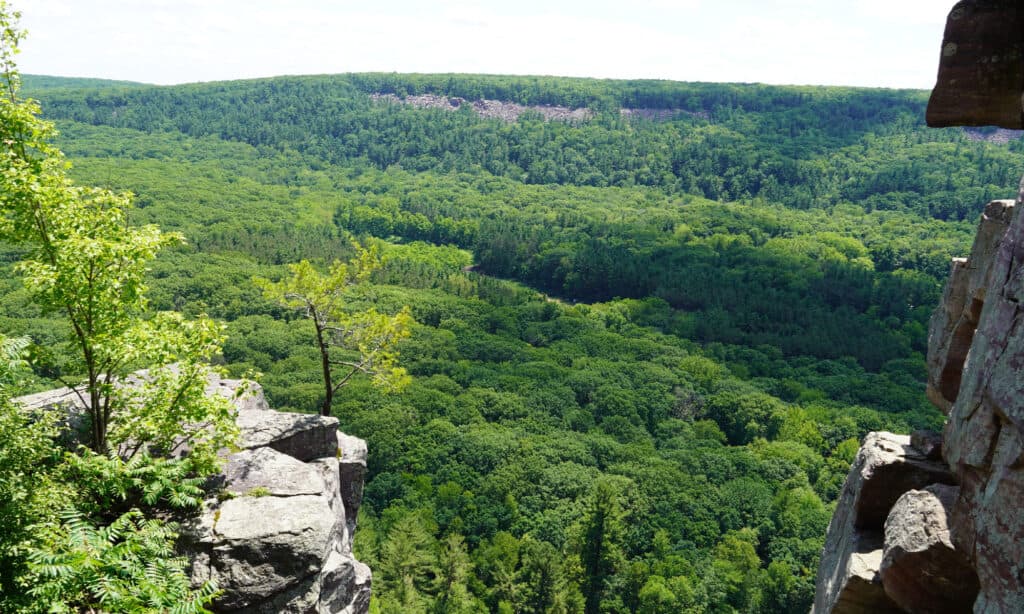
Most of Utah’s bear population lives in higher elevations.
©thegreatluna8713/Shutterstock.com
Utah provides a comprehensive guidebook detailing all the necessary laws and regulations for bear hunting in Utah.
“We have a spring season (April to May), a summer season (June), and a fall season (August and part of November). You are required to have a license,” Wilson says. “There are different hunt structures, too. Some seasons are ‘spot and stalk,’ some allow hunting with hounds, and in some, you can use bait.”
All bear hunters in Utah must follow specific rules and regulations. Here are some of the key points to be aware of:
- For limited-entry bear hunts, you need a valid hunting or combination license.
- After a successful harvest, you must report it within 48 hours and have a valid tag and GPS data.
- All permit holders must attend a mandatory orientation. Hunters born after 1965 must have completed a hunter education course, and youth hunters (ages 12 and up) must be accompanied by an adult.
- If you apply for a limited-entry permit but are unsuccessful, you can earn bonus points for future applications.
- If you hunt on private land, you must have written permission from the landowner.
- There are specific regulations regarding the use of dogs, bait, and trail cameras during the hunt.
Black Bear Population and Management
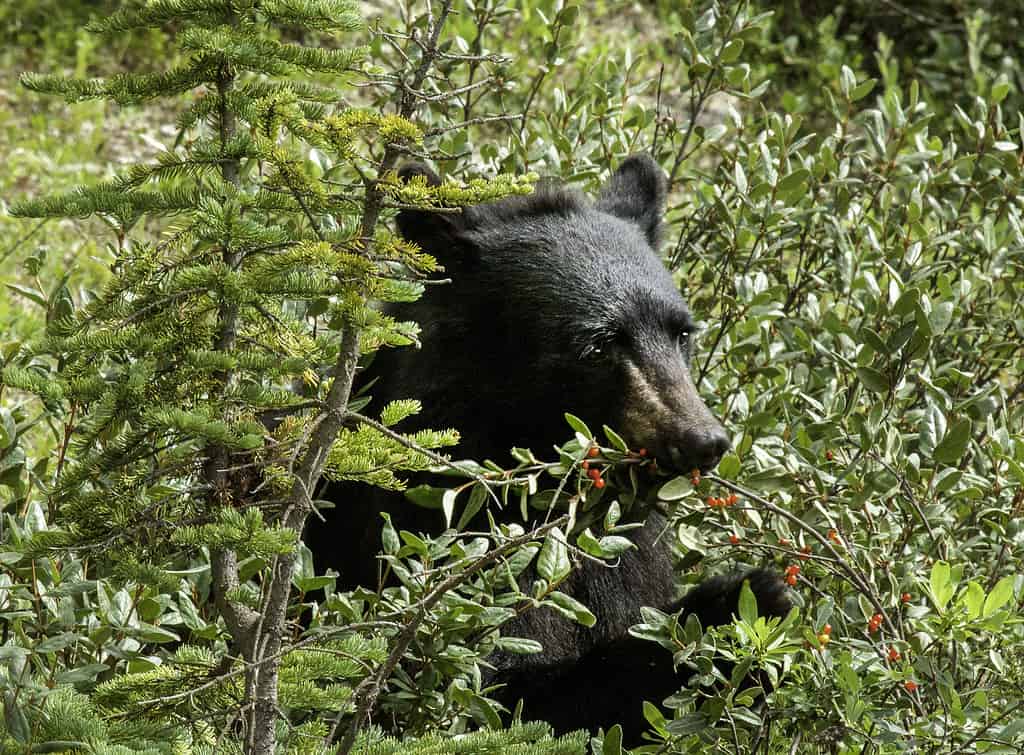
Only 10 percent of a black bear’s diet consists of meat.
©millermountainman/ via Getty Images
The DWR manages Utah’s black bear population to ensure both the bears and the public remain safe. The Utah Black Bear Management Plan outlines the department’s strategy. “Our goal is to make it so humans and bears can co-exist,” Wilson explains.
To strike a balance between a healthy bear population and human safety, the DWR monitors black bears closely through annual surveys and by collecting harvest data from hunters. All hunters are required to report any harvested bear within 48 hours. This mandatory check-in helps the DWR estimate bear numbers and set population goals, which in turn allows them to regulate hunting seasons and harvest limits.
Our goal is to make it so humans and bears can co-exist.
Chad Wilson, a wildlife biologist from the Utah Department of Wildlife Services
Encountering Bears in Utah
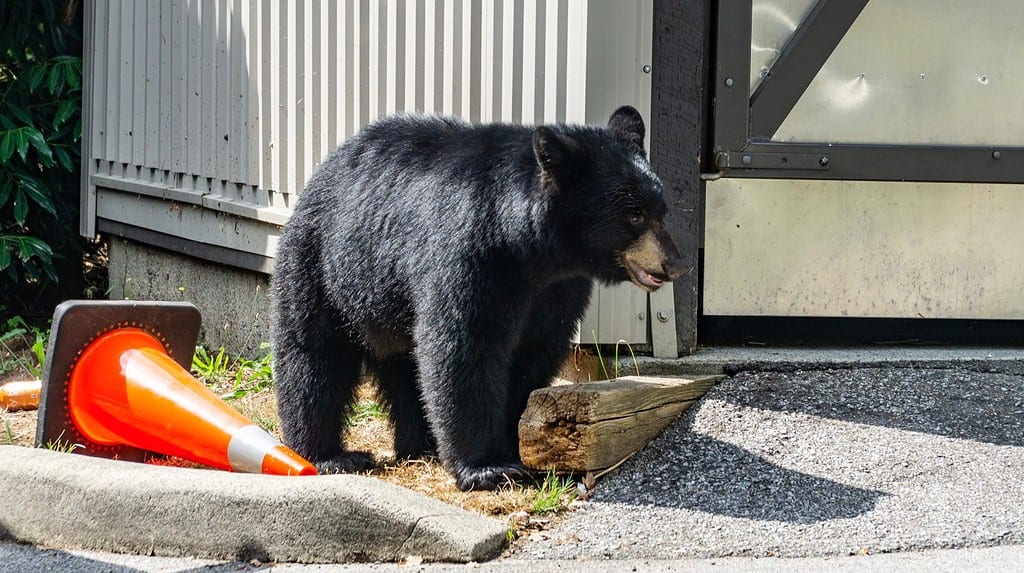
Black bears can smell food at least a mile away.
©Pawel Serafin/Shutterstock.com
Beyond hunting, human-bear interactions are most common at campsites and recreational areas. Black bears have an incredible sense of smell and, as opportunistic eaters, are always on the lookout for food. A campsite full of snacks can easily attract a bear looking for something to eat.
Black bears are typically solitary and shy, and they prefer to avoid people. However, they may venture closer to human activity during times of drought when food is scarce. Anyone enjoying Utah’s outdoors should practice proper bear safety techniques. Here are some tips for coexisting with bears in Utah:
- Keep a clean campsite. Store scented items (like food, drinks, sunscreen, and deodorant) in airtight bags, a bear-safe container, or in your vehicle.
- Never feed a bear: Do not intentionally leave food out or try to attract wildlife.
- If you see a bear, report it to the DWR.
- If you encounter a bear, do not panic or run. Stand your ground and make yourself look as large as possible by raising your arms calmly. Do not climb a tree (bears are excellent climbers!). Most importantly, stay calm; in most cases, the bear will leave on its own.
When Bears Lose Their Fear of Humans
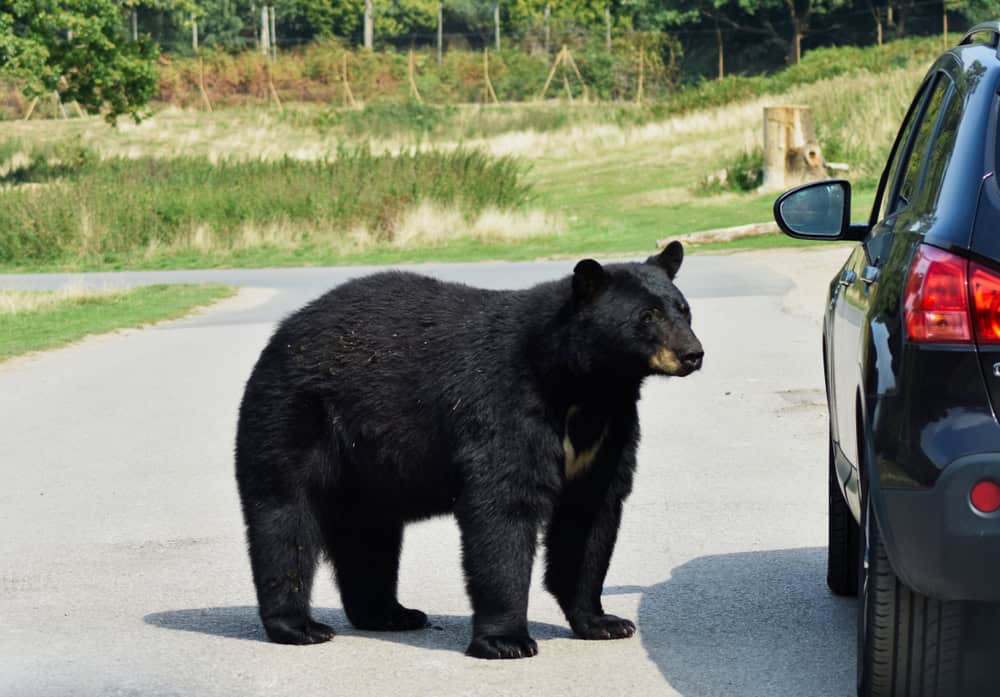
When tourists feed the animals or leave behind trash, it causes problems for wildlife.
©David Cardinez/Shutterstock.com
Education is key to coexisting with bears in Utah. However, if a bear finds an easy meal left behind by a careless person — such as leftover trash — it can learn to associate humans with food. This can lead to a bear becoming less afraid of people and more likely to seek out humans.
When this happens, wildlife officials must intervene to ensure public safety.
“If bears show a lack of fear of humans, we do take action,” Wilson says. “Generally, we take what we consider the least amount of action that will still ensure the safety of the public.”
This means officials will choose the most humane and effective method to discourage the bear’s behavior, which may include scaring the bear away, relocating it, or, as a last resort, euthanizing it.
The Largest Bear Ever Trapped in Utah
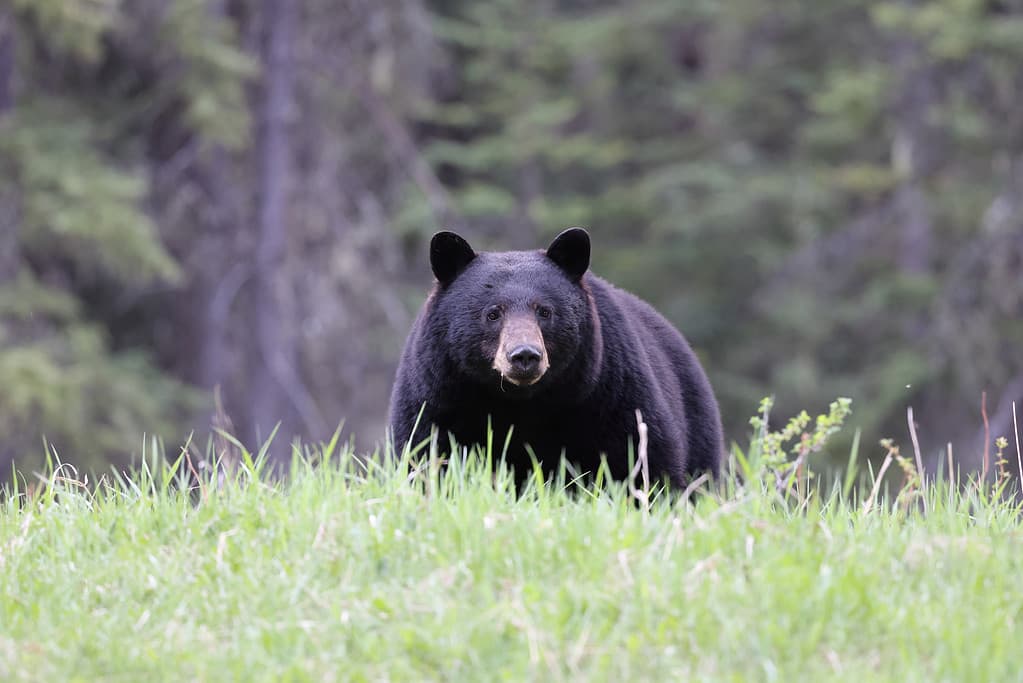
Black bears are typically most active during the early mornings and late evenings.
©Frank Fichtmüller/iStock via Getty Images
While Utah’s DWR doesn’t keep a record of the largest historical bears, there are two notable examples from both folklore and official records.
Old Ephraim
The most famous is “Old Ephraim,” a legendary grizzly bear that roamed between Utah and Idaho, preying on livestock in the 1920s. After hunting it for nearly 10 years, Frank Clark trapped and killed the bear in Utah’s Logan Canyon in 1923. The earliest record of Old Ephraim was published in 1928 in Nature Magazine, featuring Frank Clark’s own retelling.
Folklore claims Old Ephraim stood 10 feet tall and weighed over 1,000 pounds. However, the University of Montana’s Grizzly Bear Recovery Program suggests a more realistic size of 7.5 feet and around 550 pounds, based on the size of the bear’s skull. It may not have been the biggest bear ever recorded, but it was still a rather impressively sized grizzly.
Modern Record Holder
In more recent decades, a black bear carcass discovered in the Manti-La Sal National Forest holds the record for being the largest in Utah. The bear’s skull measured 23 10/16 inches, making it the largest recorded by the Boone and Crockett Club. The Smithsonian Institution authenticated the finding, and a Certificate of Merit was issued in 1980.
The post The Largest Bear Ever Trapped in Utah appeared first on A-Z Animals.
September 14, 2025 at 05:02PMKellianne Matthews
.jpeg)
.jpeg)

0 Comments